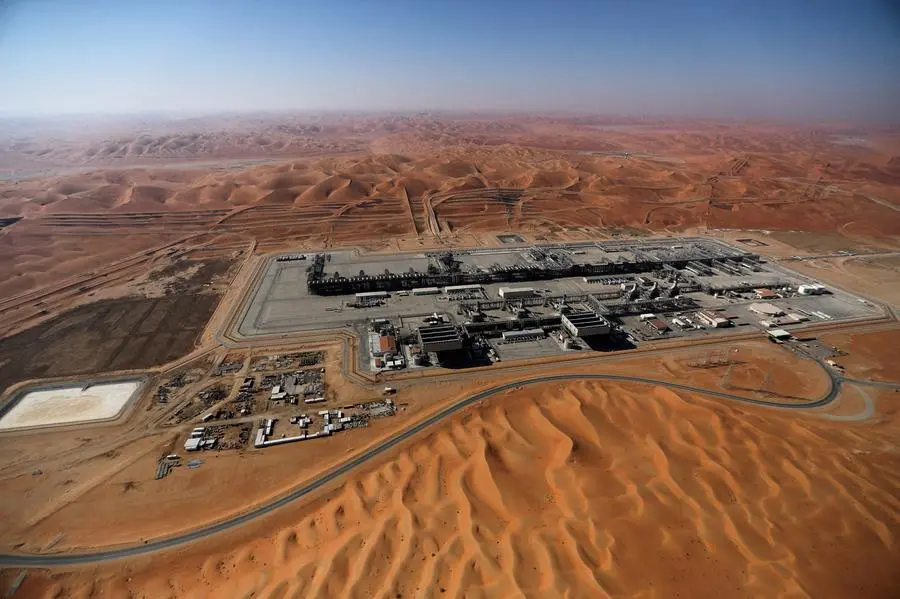Aramco’s Third-Quarter Profit Climbs to Nearly $28 Billion on Production Gains
Aramco’s Third-Quarter Profit Climbs to Nearly $28 Billion on Production Gains
By
Junia Wells
Last updated:
November 4, 2025
First Published:
November 4, 2025

Photo: ZAWYA
Strong Earnings Amid a Soft Price Environment
Saudi Aramco, the world’s largest oil producer, posted stronger-than-expected earnings for the third quarter, demonstrating resilience in a volatile oil market. The company reported adjusted net income of 104.92 billion Saudi riyals (US$27.98 billion), exceeding analyst expectations of 98.47 billion riyals, according to LSEG data.
This marks a 0.9 % year-over-year increase, achieved despite crude prices trending lower for most of the year. Aramco’s steady production and cost discipline helped offset the drag from weaker benchmark prices, which remain more than 6 % lower year-to-date as of September.
Global Oil Market Pressures Persist
Oil markets have faced turbulence throughout 2024, pressured by slowing economic growth in China, steady U.S. output, and fluctuating OPEC+ production policies.
Data from FactSet shows that West Texas Intermediate (WTI) crude prices are down over 16 % so far this year, while Brent crude — the global benchmark — is down more than 12 %.
CEO Amin Nasser acknowledged the challenges but emphasized Aramco’s efficiency:
“We increased production with minimal incremental cost and reliably supplied the oil, gas, and associated products our customers depend on, driving strong financial performance and quarterly earnings growth,” he said.
Key Financial Highlights
- Revenue: 418.16 billion Saudi riyals, surpassing expectations of 411.26 billion riyals.
- Net debt: Fell to 114.33 billion riyals, down slightly from 115.59 billion riyals three months earlier.
- Free cash flow: Rose to US$23.6 billion, up from $22 billion last year.
- Dividends: The board approved a base dividend of $21.1 billion and an additional performance-linked dividend of $0.2 billion to be paid in Q4 2025.
These figures reaffirm Aramco’s financial strength even in a subdued pricing climate. The company continues to prioritize shareholder returns through a combination of stable dividends and strategic reinvestments.
OPEC+ Dynamics: Controlled Production Growth
Aramco’s results come shortly after OPEC+ announced a modest increase in oil production for December 2025 while pausing further hikes in the first quarter of next year. The group agreed to raise output by 137,000 barrels per day, matching prior monthly increments for October and November.
Since April, total OPEC+ output targets have climbed by roughly 2.9 million barrels per day, though the group has slowed its pace amid fears of a market surplus. The decision reflects a balancing act between maintaining price stability and supporting member economies dependent on oil exports.
Adding pressure, new Western sanctions on Russia — targeting state producers like Rosneft and Lukoil — have constrained Moscow’s ability to ramp up production, complicating OPEC+ coordination efforts.
Strategic Expansions and Technology Investments
Beyond its core oil operations, Aramco is expanding its footprint in both industrial and digital sectors. The company recently acquired a 22.5 % stake in Petro Rabigh from Japan’s Sumitomo Chemical for $701.8 million, raising its total ownership to about 60 %. The move strengthens Aramco’s downstream operations and supports Saudi Arabia’s broader industrial diversification under Vision 2030.
In another strategic step, Aramco took a minority stake in HUMAIN, an artificial intelligence firm backed by the Saudi Public Investment Fund (PIF). The investment aligns with the company’s push to integrate AI technologies into exploration, refining, and logistics operations.
Nasser noted that the deal would “accelerate Aramco’s digital transformation and reinforce its position in the rapidly evolving AI sector.”
Outlook: Balancing Growth and Global Uncertainty
Aramco’s performance underscores its ability to adapt to shifting global energy dynamics. Analysts expect the company to maintain steady production levels and healthy margins, thanks to its low-cost operations and scale advantage.
However, the near-term outlook will hinge on global demand recovery, OPEC+ coordination, and geopolitical developments affecting supply chains. With oil prices expected to remain range-bound, Aramco’s continued diversification — both within energy and into advanced technologies — may prove vital in sustaining long-term growth.
In a sector still finding equilibrium, Aramco’s third-quarter results reaffirm its dominance — not just as the world’s largest oil producer, but as a strategic anchor in the global energy transition.
Popular articles
Subscribe to unlock premium content
How Adults Are Paying to Experience Silent Daylong Festivals for Mindfulness

The Rise of Ultra-Personalized Scent Memory Experiences Using Olfactory Therapy

Why Some Millennials Are Paying for One-Day Luxury Survival Challenges in Nature

How Adults Are Paying to Experience Silent Daylong Festivals for Mindfulness

The Rise of Ultra-Personalized Scent Memory Experiences Using Olfactory Therapy

How Adults Are Paying to Experience Silent Daylong Festivals for Mindfulness







.png)

